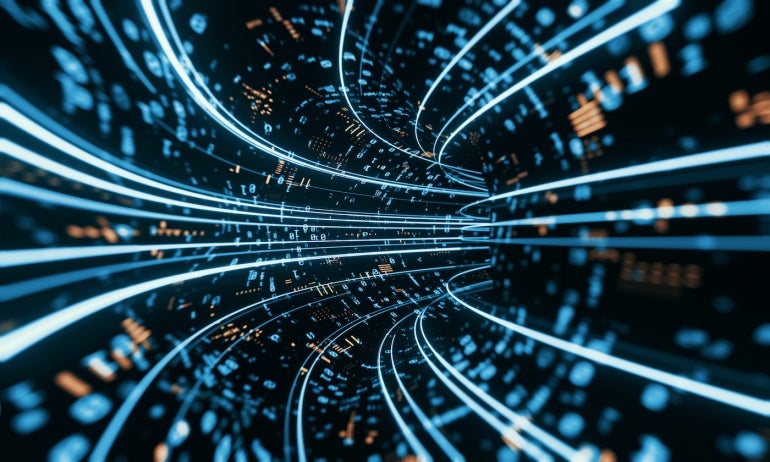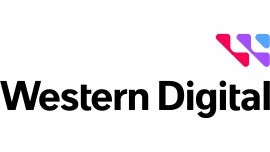
Big data keeps getting bigger in enterprise data centers. While data storage solutions are more or less keeping up, many companies are struggling to find storage options that balance capacity, security and accessibility with enterprise IT budget limitations. As enterprise data doubles, triples or grows even more exponentially in the future, how can businesses store all of this data without throwing their budgets out the window?
SEE: Checklist: Cloud storage management (TechRepublic Premium)
Western Digital, a hardware and software company that specializes in hard disk drives and other types of storage solutions, has been working on optimizing its existing products and creating new ones to help customers manage total cost of ownership. Ravi Pendekanti, SVP of product management and marketing for the HDD Business Unit at Western Digital, recently spoke with TechRepublic about some of the company’s innovations that are making lower TCO possible.
Jump to:
- About the Western Digital HDD portfolio
- The emergence and growth of SMR technology
- How HDD works for companies of all sizes
- HDD and the push for sustainability
- Making big data accessible with the right storage technology
- The future of data storage
- About Ravi Pendekanti
About the Western Digital HDD portfolio
TechRepublic: What problem(s) is Western Digital solving by expanding its HDD technology?
Pendekanti: First and foremost, we see more data being stored now than ever before; it is said that each of us is probably storing two times more data this year than last year. With that said, the big challenge that most customers have is how to make sure infrastructure costs don’t spiral out of control.
Let’s say we grow our storage needs by 100%. That unfortunately doesn’t mean that your IT budget is also doubling, so we have gone back, and using that problem as the backdrop, we have been focusing on a few things to improve the TCO for our customers.

We are making improvements from the perspective of putting out higher-density or higher-capacity drives. Gone are the days when people used to talk about single-digit terabytes. Western Digital has introduced the highest capacity drives with 22 terabytes in conventional magnetic recording technology, and we’re doing the same thing on the same drive with shingled magnetic recording technology, which can go up to 26 terabytes.
My point is that we are adding more capacity, but we’re also being cognizant of the fact that we have different technologies: CMR versus SMR.
SEE: Quick glossary: Storage (TechRepublic Premium)
SMR adds more punch. But as we use SMR, we’ve realized that we have to ensure that the TCO part is taken care of. This is where we are beginning to use flash technology rather than dynamic random access memory technology to lower our costs.
We also introduced something called OptiNAND within our drives, which uses flash rather than DRAM. There is always going to be DRAM, but we want to use flash and keep the size of the DRAM as small as possible to keep the cost down. As we do all this, we want to make sure our drives are as secure as possible. So it’s the trifecta of capacity, security and then, of course, performance.
The emergence and growth of SMR technology
TechRepublic: What are the latest technologies that you and your customers are starting to adopt?
Pendekanti: We’ve been talking about SMR for a number of years now, but the adoption has been slower than we would have liked. The good thing, though, is in the last 12 months, we have found more of the large cloud providers jumping on the bandwagon because they are running into storage issues too. Everybody, whether it is a small company or a big one, has OpEx and CapEx challenges. You don’t have an infinite budget, as much as everybody would like to.
But there’s one other salient point, which I think is also important: Power is becoming an issue for a lot of customers. If you go back even five to six years from where we are now, the cost of power has gone up nearly 30 to 40%, which is huge. This is why in our design, we have kept track of power usage and how it scales.
SMR adoption is getting better now. We are pleased with our SMR adoption to the point that we are predicting that within the next three to four years, nearly 40% of the capacity that is utilized will be SMR.
SEE: What does ‘data-driven’ really mean? (TechRepublic)
OptiNAND is another new technology we just recently introduced. As we look at all this, we are continuing to change our firmware to ensure that we have higher areal density. What I mean by areal density is making sure that we can put more bits on a single platter.
It’s analogous to — we were talking about flights, right? Every airline is trying to see how many more seats they can pack. If an airline has 100 seats on a plane, they believe that if you add in maybe six more seats, you’ll get additional revenue.
Likewise, when we start looking at our drives, we want to pack more density onto them. The way we start doing that is by making sure we can put more bits on a single platter. The simple formula is, if you put more bits on a single platter and you add more platters, the density of the drive goes up.
TechRepublic: What is SMR and how does it work?
Pendekanti: It’s a shingled magnetic recording, and this concept is very simple. If you look at the shingles on your house, they don’t really sit adjacent to each other; you will see they overlap a bit.
If you put shingles all across your roof and they’re only adjacent to each other, you can only put on so many shingles. If you make the shingles overlap a bit, you can add more shingles in the same capacity or in the same area. That’s essentially what SMR is. With the shingled approach, you’re able to add more capacity. To be able to do SMR effectively, the customer has to make changes to their data storage.
Because changes are needed, SMR adoption was a little slow at first: If you asked me maybe a few years ago, the amount of capacity that was being deployed using SMR was a single-digit percentage. Today, we’re in the 20% to 25% range, and fast-forward a couple more years, we think it’ll be 40% plus.
People are now beginning to understand the huge benefit it offers. The TCO is obviously advantageous because they’re able to add more capacity.
How HDD works for companies of all sizes
TechRepublic: What kinds of companies can most benefit from HDD innovation?
Pendekanti: We think traditional CMR technology can be used by anyone, because you don’t really have to make any changes. On the application side, the customer doesn’t have to make any changes, and that’s the beauty of it.
The SMR technology gives you additional density — a CMR drive can give you 22 terabytes while an SMR drive can give you 26 — but to get that additional capacity, the customer will have to make some changes. That’s why SMR is predominantly being adopted by large cloud providers.
SEE: 9 top Dropbox alternatives: Free and premium tools (TechRepublic)
The CMR technology as it is doesn’t need any changes and is being adopted by various customers, whereas the SMR is predominantly for those customers who can invest on their side to make changes. That’s by and large been the cloud providers, because they look at not tens of thousands of drives but rather hundreds of thousands of drives. For them to invest makes sense, and they get a fantastic return on investment.
HDD and the push for sustainability
TechRepublic: How are your HDD solutions helping businesses meet ESG and other sustainability standards?
Pendekanti: We are working with some of our customers through the printed circuit board assemblies we have on the drives. They ship us their PCBAs, and we provide them with some of the tools they need to effectively remove them. Due to security concerns, customers don’t want to just ship a drive, because who knows what will happen in the transfer or what nefarious characters could get the data.
What we are doing is providing the necessary know-how and tools to some of our customers to securely remove and ship PCBAs. This is actually a pilot we are working through, because again, keeping the data safe is important.
SEE: Data governance checklist for your organization (TechRepublic Premium)
It’s almost analogous to when we recycle our own laptops: We make sure we take the drives out before we give the laptops to the recycling facility. So when Western Digital provides the tools and the know-how, our customers are able to retrieve the PCBAs and then ship them to us. Then we go through the process of extracting the metals so we can put them into reuse.
We have what I call a circular economy of solids. Those customers are keen to now let us go back and use those PCBAs in the new drives. That’s something that we have started off as a pilot, because we need to make sure the customers are comfortable with it.
This next point goes back to how we want to make sure the power for these high-capacity drives doesn’t keep going up as capacity goes up. Every nation seems to have an issue with power, and it’s getting more expensive. We also want to make sure that we don’t pollute the water or the air with our power usage. There are a lot of thermal plants around the world raising pollution, so we don’t want to use more of these resources than are needed.
SEE: Top 5 benefits of applying ESG standards to your business (TechRepublic)
One of the elements of our design has always been to keep the power per terabyte consistent. When you go from 20 to 26 terabytes, that’s a significant uplift. It’s 30% additional capacity, if you think about it, but that doesn’t mean it should take 30% more power. Our goal is to keep it almost linear, and that’s why our design methodology is to keep that in mind when we design our products.
Making big data accessible with the right storage technology
TechRepublic: HDD storage gives you more capacity to store data, but does it simultaneously make that data more accessible to business users?
Pendekanti: This is where I will draw a contrast to show why I think this is becoming crucial. There are technologies like tape: People still use tapes to store data for archival purposes, which is great, because the beauty of tapes, of course, is a lower cost per bit. When you don’t use them or access them, you can set your tape aside.
The real issue becomes: What happens when you really need to access the data? Then you have to go back, retrieve the right tape, put it in and read it. That can take anywhere from hours to days to get the right data.
SEE: Cloud data storage policy (TechRepublic Premium)
In the current age, it’s not just about having the data at your fingertips. You should also be able to access it, because if you can’t access the data, then what good does it do? This is where HDD continues to provide the right balance between being able to store tremendous amounts of data at a lower cost per bit while also providing you with a fairly balanced way of accessing it.
It is said we have close to one zettabyte plus of data that’s on drives. In the next three to five years, we’re supposed to add another three to four zettabytes. As more data is being stored, we all need to find a solution for managing it. On the flip side, it is also about making sure that we have the right amount of flexibility in the solution to serve up data when needed.
The future of data storage
TechRepublic: What does the future of data storage look like to you?
Pendekanti: As we develop things like AI and machine learning technologies, people talk about them and want to use them. People forget that if you want to do machine learning or deep learning, you need a lot of data and then you need to store it.
SEE: The deep learning and analysis certification bundle (TechRepublic Academy)
It’s not going to stop, because there’s also regulatory data to consider. Look at HIPAA. In healthcare, for example, there are stringent protocols and data safety concerns and questions about how and how long data needs to be retained.
New data storage needs are everywhere you look. As people talk about AI, machine learning, deep learning, IoT and edge computing, all of these innovations are adding more data. Once you see this trend line, you can understand why we will see more data being created and needing to be stored going forward.
Read next: Best data preparation software (TechRepublic)
About Ravi Pendekanti

Ravi Pendekanti is senior vice president of product management and marketing for the HDD Business Unit at Western Digital, where he leads HDD product planning, pricing, segment marketing and competitive analysis. He is responsible for the strategy, roadmap design and go-to-market approach for the expansive HDD product family and for driving preference for Western Digital’s HDD portfolio across consumer, enterprise and OEM markets.
Note: This interview has been edited for length and clarity.
